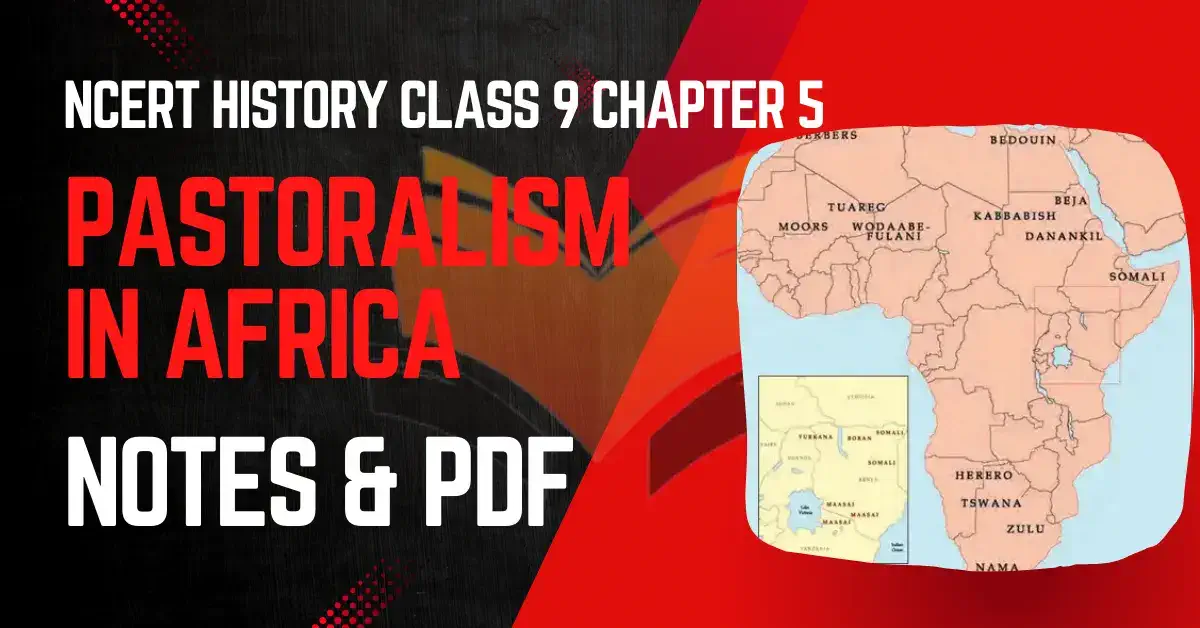Pastoralism in Africa – Concept & Notes PDF
Topic & sub-topics covered: Pastoralism in Africa and MCQs Questions: Pastoralists in the Modern World (All single detail notes are exam-oriented).
We have discussed in-depth and exam-oriented pointers that can be asked in the board exam of class 9th about the “Pastoralism in Africa” from the NCERT History notes for class 9th chapter 5th “Pastoralists in the Modern World“.
Download the NCERT History for Class 9th Chapter 5 Pastoralists in the Modern World Notes PDF
Ace your Class 9 History revision with crisp, exam-oriented notes for Chapter 5, Pastoralists in the Modern World. This Pastoralists in the Modern World Notes PDF explains who pastoral nomads are and why mobility sustains their herds, economies, and culture. It covers core topics with clarity: Pastoral Nomads and their Movements; In the Mountains (Gujjar Bakarwals); On the Plateaus (Dhangars); In the Plains (Gollas, Kurumas, Kurubas); Colonial Rule and Pastoral Life; Waste Land Rules; Forest Acts and Grazing Tax; Criminal Tribes Act; How Did the Pastoralists Cope?; and Pastoralism in Africa (Maasai).
You’ll get timelines, key terms, map cues, and previous-year style questions to lock concepts fast. Designed for quick last-minute review and deeper understanding, these notes highlight cause-effect links, policy impacts, and livelihood changes under colonialism. Download the NCERT History Class 9 Chapter 5 Notes PDF and study smarter – focused coverage, clean language, and everything you need for tests, assignments, quizzes, viva, projects, and board-level preparation.
Pastoralism in Africa
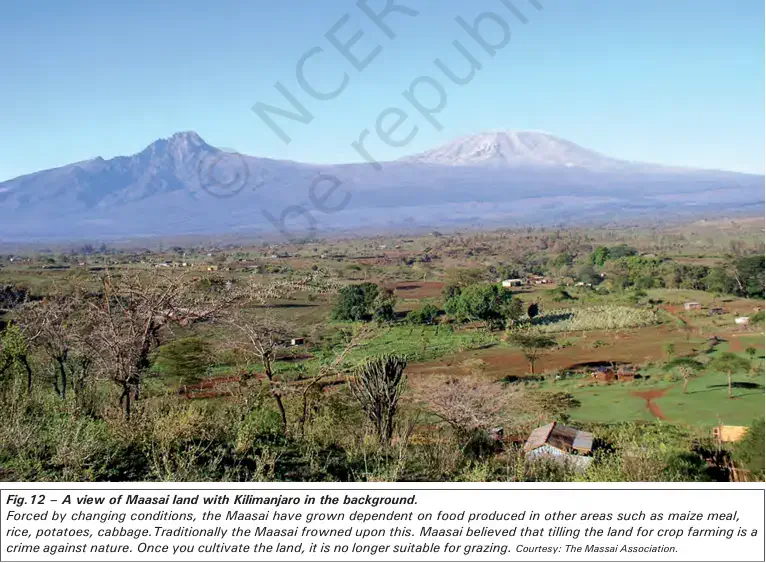
1. General Facts about Pastoralism in Africa:
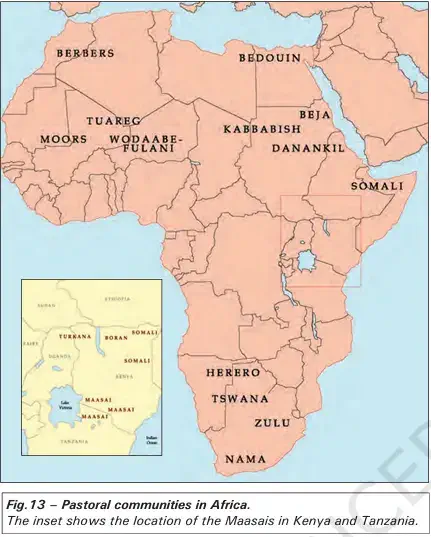
- Africa – Home to over half of the world’s pastoral population.
- Even today – 22 million Africans depend on pastoral activities for livelihood.
- Major pastoral communities – Bedouins, Berbers, Maasai, Somali, Boran, Turkana.
- Geographical habitat – Semi-arid grasslands and arid deserts where rainfed agriculture is difficult.
- Livestock reared – Cattle, camels, goats, sheep, donkeys.
2. Economic Activities of African Pastoralists:
- Sell products like – Milk, meat, animal skin, wool.
- Other sources of income:
a. Trade and transport.
b. Combining pastoralism with agriculture.
c. Doing odd jobs to supplement meagre & uncertain income.
3. Changes in African Pastoralism:
- Lives of African pastoralists have undergone dramatic changes during colonial and post-colonial periods.
- Similar to Indian pastoralists – faced changes due to new laws and state control.
4. Case Study – Maasai Pastoralists:
- Maasai = Famous cattle herders of East Africa.
- Population distribution:
a. 300,000 in southern Kenya.
b. 150,000 in Tanzania. - Colonial laws & regulations:
a. Took away Maasai land.
b. Restricted their movement. - Consequences:
a. Suffered heavily in times of drought.
b. Their social relationships were reshaped.
5. On Tanganyika:
- German East Africa was conquered by Britain during the First World War.
- In 1919, Tanganyika officially came under British control.
- Tanganyika attained independence in 1961.
- In 1964, Tanganyika united with Zanzibar to form Tanzania.
Problems Faced by Pastoral Communities in Namibia (Source E)
- The Kaokoland herders of Namibia traditionally moved between Kaokoland and Ovamboland.
- They sold skins, meat, and trade products in neighbouring markets.
- Colonial rule introduced territorial boundaries, restricting their free movement.
- As a result:
a. Herders felt “imprisoned” by closed borders.
b. Could not get meat from the south.
c. Could not send sleeping skins outside.
d. Ovamboland was closed for them, though they had lived there long.
e. They wanted to take cattle, sheep, and goats across but were blocked. - Herders expressed deep suffering: “We are in jail… The borders press us heavily. We cannot live.” (Kaokoland herders’ statement, 1949).
Colonial Control through Policing (Source F)
- In colonial Africa, police were instructed to monitor pastoralists’ movements.
- Pastoralists were prevented from entering white areas.
- Example from South-West Africa (Namibia):
a. Magistrate’s order (1937): Passes should not be issued to Kaokoland herders unless in exceptional circumstances. - Purpose of the proclamation:
a. To restrict the number of natives entering the Territory.
b. To keep strict surveillance over them.
c. To deny ordinary visiting passes.
Where have the Grazing Lands Gone?
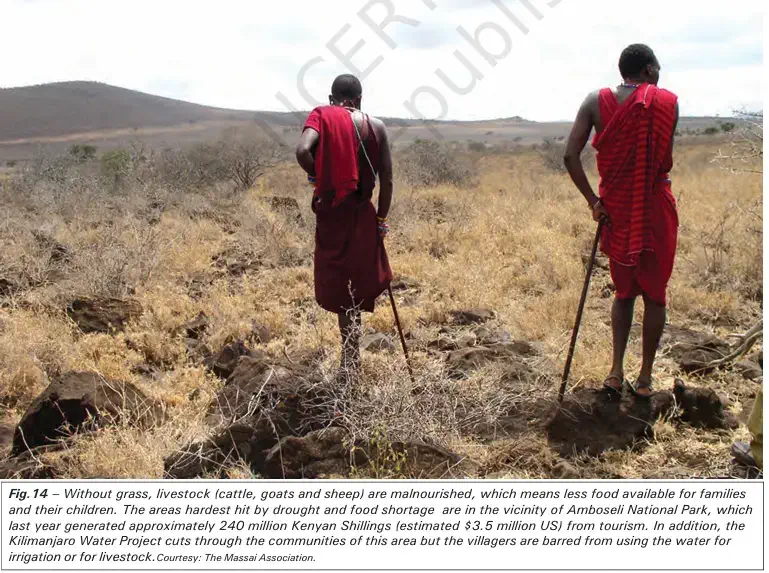
1. Loss of Maasai Grazing Lands:
- Major problem of Maasai = Continuous loss of grazing lands.
- Before colonial rule – Maasailand stretched from North Kenya to Northern Tanzania.
- 1885 – European powers divided Maasailand with a boundary:
a. British Kenya.
b. German Tanganyika. - Best grazing lands – Taken over by white settlers.
- Maasai were pushed into smaller areas – South Kenya and North Tanzania.
- They lost 60% of their pre-colonial lands.
- Confined to arid zones with uncertain rainfall & poor pastures.
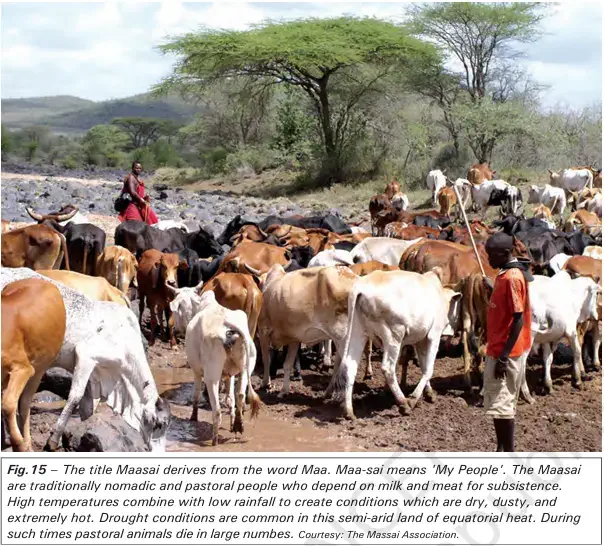
2. Impact of Cultivation Expansion:
- From late 19th century – British encouraged local peasant cultivation.
- Result: Pasturelands converted into cultivated fields.
- Pre-colonial period – Maasai dominated their agricultural neighbours economically & politically.
- By end of colonial rule – Situation reversed; agricultural communities gained dominance.
3. Creation of Game Reserves:
- Large grazing lands converted into game reserves:
a. Maasai Mara (Kenya).
b. Samburu National Park (Kenya).
c. Serengeti Park (Tanzania). - Pastoralists were banned from entering reserves – could neither hunt nor graze.
- These reserves were actually traditional Maasai grazing grounds.
- Serengeti National Park = created over 14,760 sq. km of Maasai grazing land.
4. Consequences of Land Loss:
- Loss of finest grazing lands + water sources – created land pressure.
- Continuous grazing in restricted areas – deterioration of pasture quality.
- Result – Fodder shortage became permanent.
- Feeding cattle became a persistent and serious problem.
The Borders are Closed
1. Pastoral Life Before Colonial Rule:
- In the 19th century, African pastoralists moved freely over vast areas in search of pastures.
- When pastures were exhausted – they shifted to new grazing areas.
2. Colonial Restrictions on Mobility:
- From the late 19th century, colonial governments started imposing restrictions on pastoral mobility.
- Pastoralists were confined to special reserves.
- Reserve boundaries became their movement limits.
- Movement outside reserves required special permits.
- Permits were difficult to obtain – involved trouble and harassment.
- Disobeying rules led to severe punishment.
3. Restrictions on Trade & Market Access:
- Pastoralists were not allowed to enter markets in white areas.
- In many regions, they were banned from trade activities.
- Europeans considered pastoralists dangerous and savage – contact was minimised.
- However, total separation was impossible because white colonists depended on black labour for:
a. Mining.
b. Road construction.
c. Town building.
4. Impact on Pastoralists’ Lives:
- New territorial boundaries + restrictions – completely changed pastoral life.
- Pastoral & trading activities were adversely affected.
- Earlier – pastoralists herded animals and traded products.
- Under colonial rule – trade was restricted, though not entirely stopped.
When Pastures Dry?
1. Impact of Drought on Pastoral Life:
- Drought affects pastoralists everywhere – pastures dry, cattle starve.
- Survival depends on moving cattle to areas where forage is available.
- Hence, traditionally, pastoralists were nomadic.
- Nomadism helped them survive bad times and avoid crises.
2. Colonial Restrictions on Maasai:
- From the colonial period, Maasai were forced to stay in a fixed area.
- They were confined to reserves, prohibited from moving in search of pastures.
- Cut off from best grazing lands, forced into semi-arid tracts prone to frequent droughts.
3. Consequences of Restrictions:
- Unable to move cattle – large numbers of Maasai animals died from starvation and disease during drought.
- 1930 Enquiry Report (Kenya):
a. Cattle: 720,000
b. Sheep: 820,000
c. Donkeys: 171,000 - In 1933–1934 severe droughts, over half the cattle in Maasai Reserve died.
- Shrinking grazing lands increased the impact of droughts.
- Frequent droughts caused a steady decline in animal stock of pastoralists.
Not All were Equally Affected
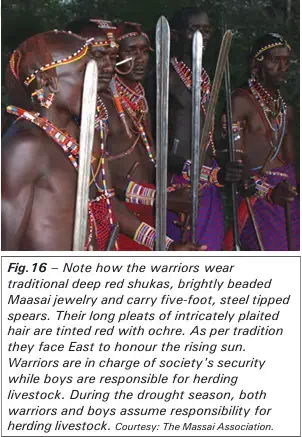
1. Pre-Colonial Maasai Society Structure:
- Maasai society was divided into two social categories:
a. Elders – ruling group, settled disputes, made community decisions.
b. Warriors (young men) – defended the tribe, organised cattle raids. - Cattle = wealth – Raiding cattle was central to asserting power of different pastoral groups.
- Young men gained recognition as warriors by proving manliness in raids and wars.
- Warriors were under the authority of the elders.
2 Colonial Interventions by the British:
- British introduced measures to administer the Maasai:
a. Appointed chiefs of different Maasai sub-groups.
b. Restricted raiding and warfare. - Result – traditional authority of elders and warriors weakened.
3. New Role of Colonial-Appointed Chiefs:
- Chiefs often accumulated wealth over time.
- Sources of their prosperity:
a. Regular income (salary).
b. Buying animals, goods, and land.
c. Lending money to poor neighbours (who needed cash to pay taxes).
d. Involvement in trade (often by living in towns). - Chiefs’ families (wives & children) stayed in villages to look after animals.
- Chiefs survived war & drought because they had dual income (pastoral + non-pastoral).
- They could buy new animals when their own stock was depleted.
4. Condition of Poor Pastoralists:
- Poor pastoralists depended only on livestock.
- During war and famine, they lost nearly everything.
- To survive, they had to migrate to towns for work.
- Occupations of poor pastoralists:
a. Charcoal burning.
b. Odd jobs.
c. Road/building construction (for the fortunate ones).
5. Social Changes in Maasai Society:
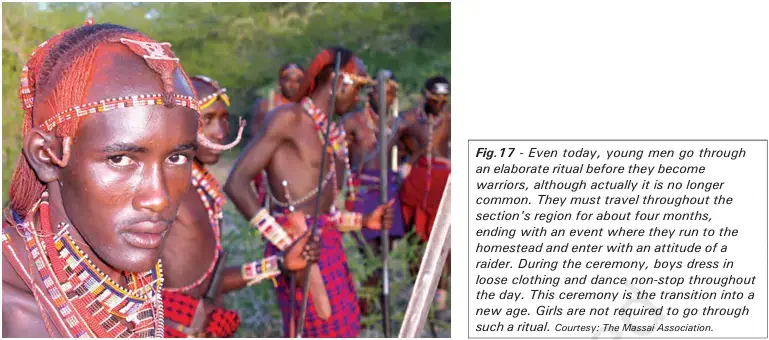
- Colonial rule caused two major social changes:
a. Disturbance in the traditional age-based difference (elders vs warriors).
b. Emergence of a new distinction between wealthy chiefs and poor pastoralists.
Conclusion
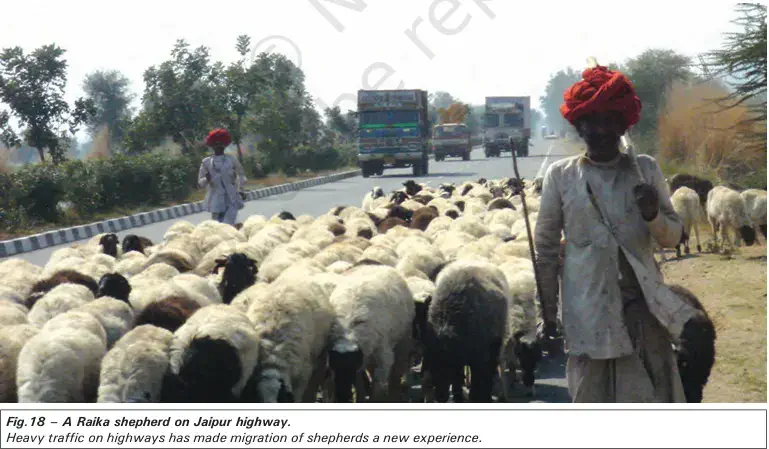
1. Impact of Modern Changes on Pastoral Communities:
- Pastoral communities are affected in different ways across the world due to modern changes.
- New laws and borders disrupt their traditional movement patterns.
- Mobility restrictions make it difficult for pastoralists to move in search of fresh pastures.
- Disappearance of pasture lands creates scarcity of grazing grounds.
- Existing pastures deteriorate due to continuous overgrazing.
- Droughts turn into crises for pastoralists, as cattle die in large numbers.
2. Adaptation Strategies of Pastoralists:
- Pastoralists adapt to changing times instead of vanishing.
- They change the routes of their annual movements.
- They reduce the number of cattle to adjust with limited resources.
- They press for rights to enter new areas.
- They exert political pressure on governments for:
a. Relief during crises
b. Subsidies
c. Other forms of support - They demand rights in managing forests and water resources.
3. Modern Relevance of Pastoralism:
- Pastoralists are not relics of the past; they still have a place in modern society.
- Pastoral nomadism is a way of life suited to hilly and dry regions.
- Both environmentalists and economists recognise the ecological and economic value of pastoral nomadism.
Next & Previous Topics of NCERT/CBSE History Class 9 Chapter 5: Pastoralists in the Modern World
| Topics No. | Topics Name |
|---|---|
| 1 | Pastoral Nomads and their Movements |
| 2 | Colonial Rule and Pastoral Life |
| 3 | Pastoralism in Africa |
MCQs on NCERT History Class 9 Chapter 5 Topic – Pastoralism in Africa
Here are the top exam-oriented MCQ-type questions on “Pastoralism in Africa” that you should prepare for your CBSE or state board exams:
Question 1. Over how many Africans depend on pastoral activity for their livelihood?
a) 12 million
b) 18 million
c) 22 million
d) 30 million
Answer: c) 22 million
Question 2. Which of the following is not an African pastoral community?
a) Maasai
b) Bedouins
c) Berbers
d) Santhals
Answer: d) Santhals
Question 3. Maasai cattle herders live primarily in:
a) North Africa
b) East Africa
c) South Africa
d) West Africa
Answer: b) East Africa
Question 4. Around how many Maasais live in southern Kenya?
a) 150,000
b) 200,000
c) 250,000
d) 300,000
Answer: d) 300,000
Question 5. In which year was Maasailand divided into two halves by colonial powers?
a) 1865
b) 1885
c) 1895
d) 1919
Answer: b) 1885
Question 6. The Maasai lost about what percentage of their pre-colonial lands?
a) 40%
b) 50%
c) 60%
d) 70%
Answer: c) 60%
Question 7. Which game reserve was created on Maasai grazing land in Tanzania?
a) Samburu National Park
b) Serengeti National Park
c) Kruger National Park
d) Tsavo National Park
Answer: b) Serengeti National Park
Question 8. What was the total area of Maasai grazing land taken over by Serengeti National Park?
a) 7,000 sq. km
b) 10,500 sq. km
c) 12,300 sq. km
d) 14,760 sq. km
Answer: d) 14,760 sq. km
Question 9. Which country was earlier known as German East Africa?
a) Namibia
b) Tanzania
c) Kenya
d) Sudan
Answer: b) Tanzania
Question 10. In which year did Tanganyika unite with Zanzibar to form Tanzania?
a) 1960
b) 1961
c) 1964
d) 1965
Answer: c) 1964
Question 11. Which pastoral community in Namibia traditionally moved between Kaokoland and Ovamboland?
a) Bedouins
b) Turkana
c) Kaokoland herders
d) Berbers
Answer: c) Kaokoland herders
Question 12. What was the main problem faced by Kaokoland herders under colonial rule?
a) Heavy taxes
b) Closed borders restricting movement
c) Lack of livestock
d) Drought only
Answer: b) Closed borders restricting movement
Question 13. What were pastoralists prohibited from doing in colonial reserves?
a) Paying taxes
b) Trading in markets
c) Hunting animals and grazing cattle
d) Working in mines
Answer: c) Hunting animals and grazing cattle
Question 14. During which drought years did over half of Maasai cattle die?
a) 1925–1926
b) 1930–1931
c) 1933–1934
d) 1940–1941
Answer: c) 1933–1934
Question 15. An enquiry in 1930 showed Maasai in Kenya possessed approximately how many cattle?
a) 5,00,000
b) 7,20,000
c) 8,50,000
d) 9,00,000
Answer: b) 7,20,000
Question 16. In pre-colonial Maasai society, which group ruled and settled disputes?
a) Elders
b) Warriors
c) Chiefs
d) Traders
Answer: a) Elders
Question 17. The warrior class in Maasai society mainly proved their manliness through:
a) Farming
b) Hunting elephants
c) Cattle raids
d) Building huts
Answer: c) Cattle raids
Question 18. Which group did the British appoint to administer Maasai tribes?
a) Elders
b) Warriors
c) Chiefs
d) Local farmers
Answer: c) Chiefs
Question 19. What new social distinction emerged in Maasai society during colonial rule?
a) Educated vs uneducated
b) Rich vs poor pastoralists
c) Farmers vs traders
d) Warriors vs peasants
Answer: b) Rich vs poor pastoralists
Question 20. Which of the following is not a product traditionally sold by African pastoralists?
a) Milk
b) Meat
c) Wool
d) Tea
Answer: d) Tea
Question 21. Which of the following statements is true about colonial policies in Africa?
a) Pastoralists were encouraged to expand trade freely
b) White settlers saw pastoralists as dangerous and savage
c) Pastoralists were allowed free access to game reserves
d) Chiefs had no role in tribal administration
Answer: b) White settlers saw pastoralists as dangerous and savage
Question 22. Environmentalists and economists today view pastoral nomadism as:
a) A backward system with no relevance
b) A form of life suited for hilly and dry regions
c) A harmful practice for grasslands
d) A colonial remnant with no future
Answer: b) A form of life suited for hilly and dry regions

